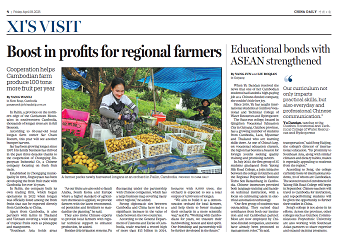Batik painting
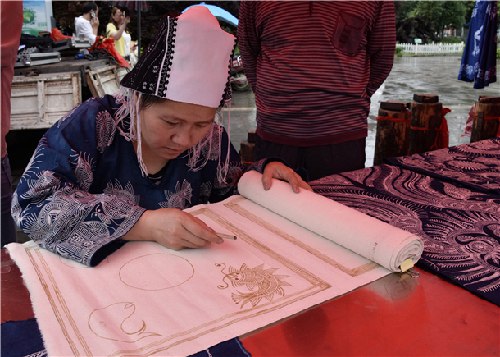 |
A Miao woman draws batik patterns on clothing before dying the cloth with a blue color. [Photo/xinhuanet.com] |
The Miao ethnic group has always been famous for their refined traditional clothing. The characteristic patterns on Miao clothing are accomplished through a painting skill known as batik.
Also known as wax printing, batik uses wax and blue dye to print patterns on clothing through a process of more than 20 steps, including delicate embroidery after the pattern has been dyed on the clothing.
The technique can be dated back thousands of years, when ancestors of the Miao people tried to record their culture on clothing. Through the evolution of the ethnic Miao culture, batik has become skill passed down by mothers to their daughters at a very early age.
Various metaphors are attached to the artistic patterns. A butterfly pattern suggests luck and a pomegranate pattern is symbolic of the promise of healthy reproductivity. For many generations, Batik painting has recorded the imaginations and expressions of the Miao people’s wishes for a better life, and in recent years has gained much attention after being listed as an intangible cultural heritage in 2006.
Danzhai county in the Qiandongnan Miao and Dong autonomous prefecture has opened batik courses in schools aimed at promoting the ancient skill among young people.
Wang Yao, a 49-year-old Miao painter, opened a batik store named "the Soul of Wax" in Fenghuang Ancient Town in 2003. He sells batik products and holds training programs for tourists and college students from across the country. "Batik is a precious memory of our ancestors. I hope the art can be appreciated and cherished by the public," he said.
All rights Reserved. 京ICP备13028878号-8







 Overview
Overview Guiyang
Guiyang Guian New Area
Guian New Area Liupanshui
Liupanshui Anshun
Anshun Qianxinan
Qianxinan Qiandongnan
Qiandongnan Qiannan
Qiannan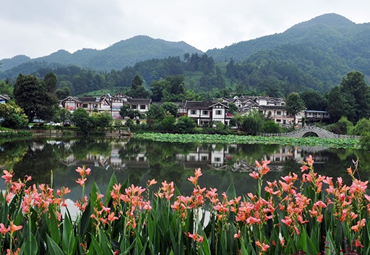 Zunyi
Zunyi Tongren
Tongren Bijie
Bijie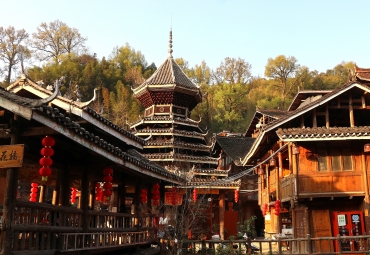 Guizhou commits to culture preservation and rural vitalization
Guizhou commits to culture preservation and rural vitalization Guizhou voice at 2025 national two sessions
Guizhou voice at 2025 national two sessions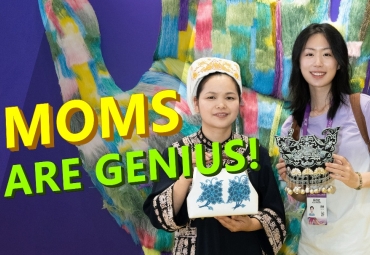 Meet the 'genius moms' at Shenzhen cultural fair
Meet the 'genius moms' at Shenzhen cultural fair 
